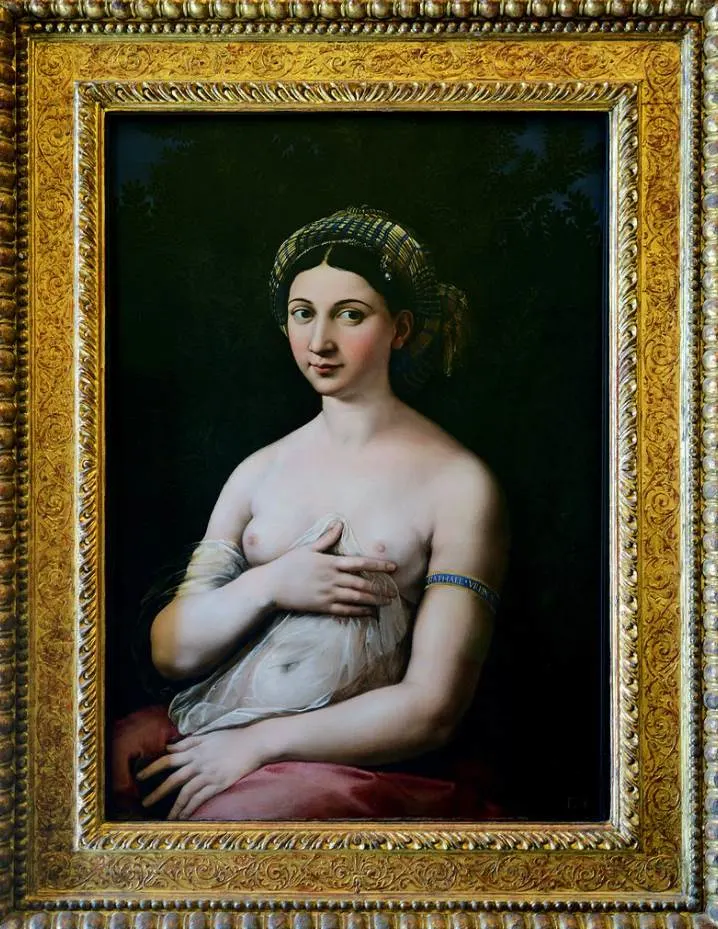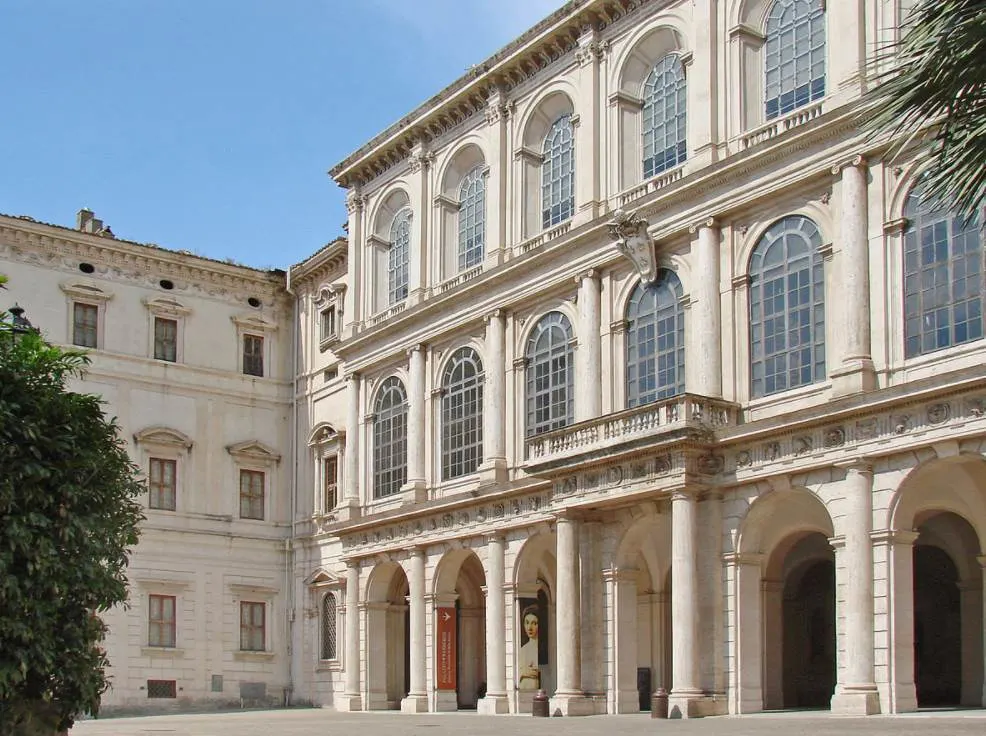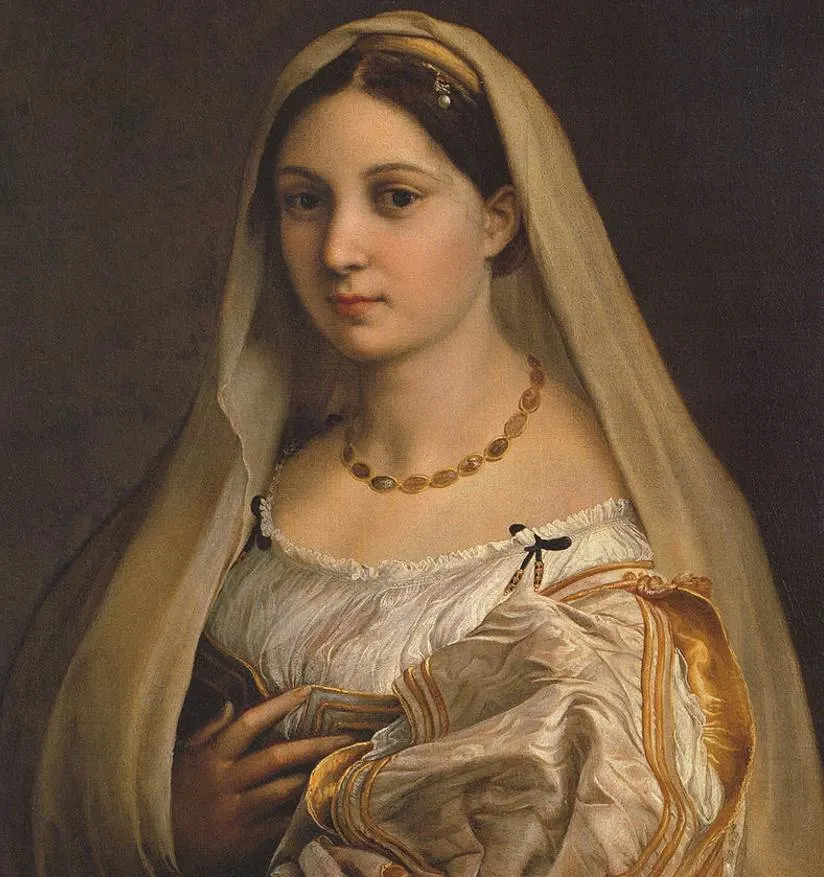The identity of a woman painted by Raffaello Sanzio da Urbino (1483-1520) shortly before he passed away has been up for debate, even though many art historians have somewhat reached a consensus about the matter.
Let’s take a closer look at some of the most interesting facts about “La Fornarina,” a painting by Raphael also referred to as “Portrait of a Young Woman,” one of the most intriguing works of the Renaissance master.
1. The painting was completed in the year before Raphael’s death
La Fornarina is the portrait of a young semi-naked woman that Raphael completed between 1518 and 1519. This was a period in which the artist was considered to be one of the greatest masters in the world.
He passed away in the year 1520 after catching a bug on the streets of Rome and failing to recover from it. He managed a workshop with almost 50 pupils at that time, something that emphasizes the copious amounts of commissions the artist received at the time.
He was also the chief architect of St Peter’s Basilica at the time following the death of Donato Bramante who made the initial design for one of the most amazing churches in the world.
Yes, Raphael was a big shot and superstar at the time he completed this work.

2. It’s assumed that it depicts Raphael’s lover in Rome
Although there are other interpretations of the painting floating around (more about that later), the consensus among art historians is that the semi-nude female is Margarita Luti, Raphael’s lover in Rome.
This is also how the painting got its name because “La Fornarina” literally translates to “the baker’s daughter,” a reference to the occupation of her father.
Little is known about the life of Margarita which makes the relationship between the extremely popular artist and the simple daughter of a local baker even more intriguing.

3. The woman wears an armband featuring the artist’s name

Following the death of her lover, Margarita Luti disappeared into obscurity. It has been suggested that she became a nun at the Convent of Santa Apollonia in the center of Florence about 4 months after Raphael’s death but this hasn’t been confirmed.
Either way, the artist did paint an armband around the naked woman’s arm with his inscription “Raphael Vrbinas,” something art historians see as the ultimate sign that the two had a loving relationship.

4. Two removed elements might confirm the lover’s theory
Perhaps the most conclusive evidence pointing towards the lover’s story is the fact that several features of the painting were removed following the artist’s death. An X-ray analysis conducted in the early 21st-century revealed two fascinating elements:
- There was a landscape in the background which depicted a myrtle bush, a sign of Venus, the goddess of love and passion.
- The woman wore a ruby ring on her third-left finger, a sign that two might have been engaged or even secretly married.
Regardless of the clear signs of love, it’s assumed that Margarita refused to marry Raphael. Perhaps she considered him to be nothing more than a playboy? After all, he was the equivalent of a modern-day rockstar so that makes sense.
5. The painting is on display in a famous palace in Rome
Because the painting wasn’t commissioned by one of Raphael’s patrons, very little is known about what happened to it following the artist’s demise.
The most probable theory concludes that the painting remained in the artist’s studio after 1520 and was subsequently sold by Giulio Romano (1499-1546), a pupil of Raphael and Mannerist artist who helped to develop the Mannerist art movement in the 16th century.
Today, the painting can be admired at the Galleria Nazionale d’Arte Antica, a national art gallery in Italy housed in two amazing palaces in Rome called the Palazzo Barberini and the Palazzo Corsini. La Fornarina is on display at the Palazzo Barberini, a 17th-century palace designed by Gian Lorenzo Bernini.

More interesting facts about La Fornarina by Raphael
6. La Fornarina isn’t a painting of monumental proportions but is still much larger than it initially appears to be. The oil on wood painting has dimensions of 85 × 60 centimeters (33 × 24 inches).
7. It’s not the only time that the depicted woman was painted by Raphael. He also painted a work called “La Donna Velata” or “La Velata” which translates to “The Woman with the Veil.”
This work was completed a couple of years earlier in 1516 and strengthens the theory that these paintings depict Margarita Luti who was Raphael’s lover at the time. This work can be found in the Palazzo Pitti in Florence, Italy.

8. An alternative theory regarding the identity of the depicted woman states that the depicted woman is simply a woman of the “Belle Donne Theme.”
This implies that the woman didn’t actually exist but was rather an image in Raphael’s mind as to how the ideal woman looks like. The theory is made strong by the fact that the artist depicted her in the “Venus pudica pose” which entices the viewer to look at her naked body.
9. One of the most remarkable elements in the painting is the fact that the woman is hiding part of her left breast. Some art historians have suggested that she is hiding a cancerous breast tumor.
This theory is made strong because the left breast appears to be bigger and doesn’t feature the smooth and healthy-looking skin of her right breast.
10. If the woman in the painting isn’t Margarita Luti, then it’s very likely that she was a prostitute whom Raphael had feelings for. This is emphasized by the fact that he painted a bracelet around the arm of the woman inscribed with his signature.
Whether or not that was the case remains an open question, but the suggestive smile might hint at that. More importantly, the yellow scarf around her head suggests that she was indeed a sex worker as all “dishonest women” were required to wear these during the Renaissance.

